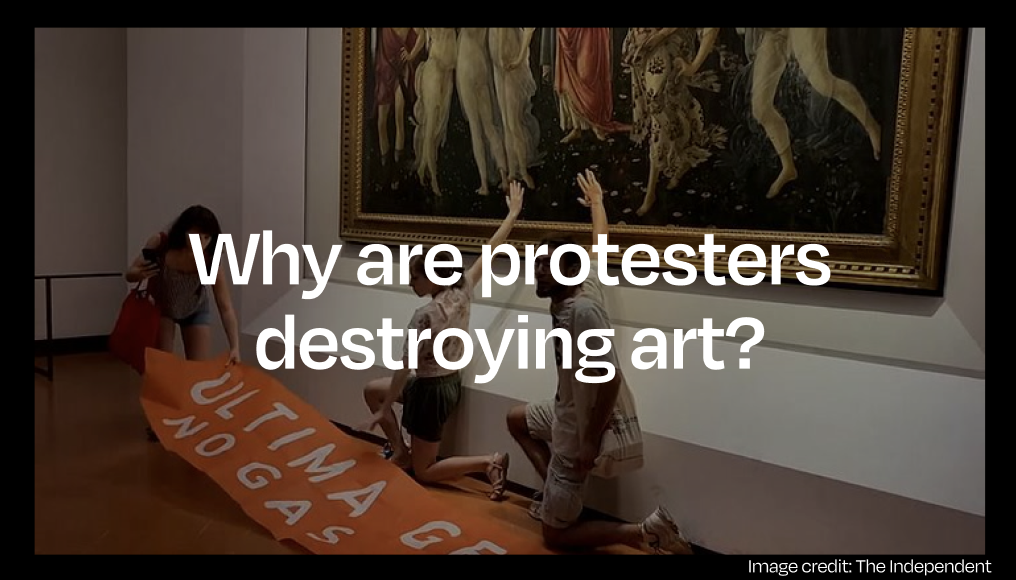
Why do protesters destroy art?
Watching protesters destroy art is a rather troubling trend that’s been making headlines more frequently in 2023. Art vandalism raises some interesting questions about why people choose to vandalism art to help aid their message. We question where the line is and what the motivations are behind these destructive actions.
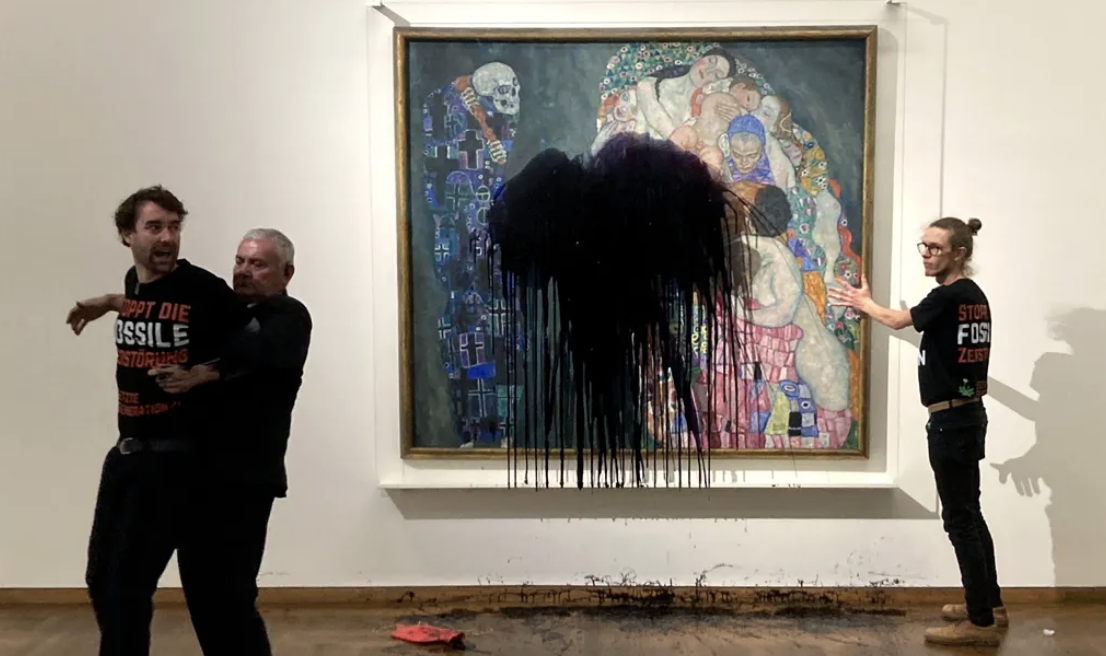
The Power of Art in Protest
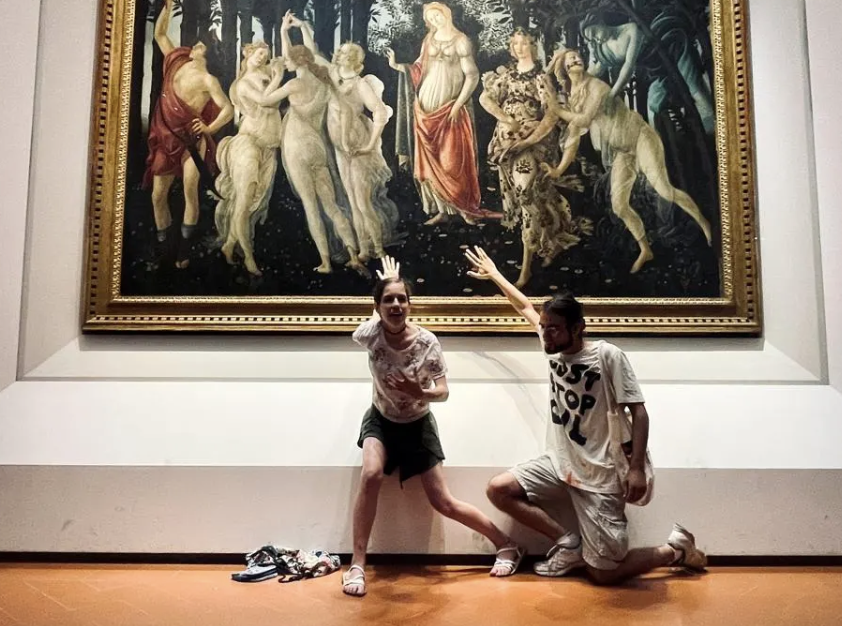
Art has been a powerful tool for protest and activism for quite some time. It’s not just about pretty pictures; it can hit you in the gut, make you think deep thoughts, and even shout for change. Whether it’s graffiti on a wall, funky sculptures, or good old-fashioned paintings, artists have used their creative chops to tackle big issues, poke holes in the status quo, and shine a spotlight on all sorts of injustices.
Protesters have often hitched their wagon to art, using it to crank up the volume on their messages. They create these iconic images that become the face of whole movements. These artworks become symbols of standing up to the powers that be and act like beacons for folks who believe in the same cause. But then, there’s the flip side – the not-so-pretty one – where people destroy art in the name of protest. And that raises a whole bunch of knotty questions about how far you can go when expressing yourself, keeping the art world’s honour intact, and dealing with the consequences when things go south.
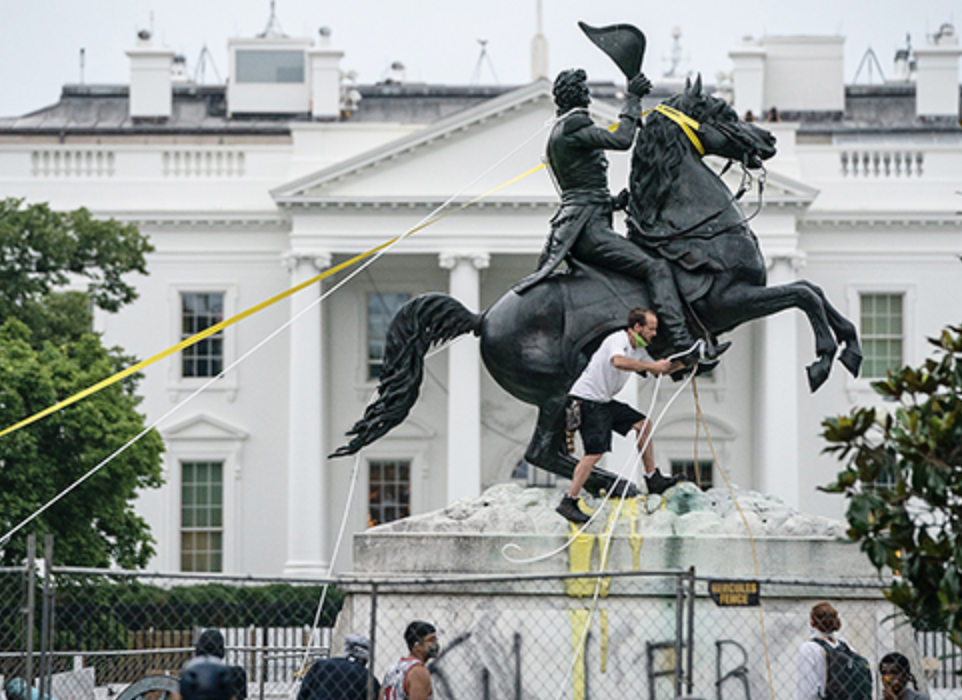
Examples of Art Destruction in Protests
-
The Toppling of Confederate Statues
In the United States, the toppling of Confederate statues during protests against racial injustice and police brutality in the wake of George Floyd’s death in 2020 was a notable example of art destruction. Demonstrators argued that these monuments celebrated a painful history of slavery and oppression. Some saw the statues as relics of white supremacy, prompting their removal or destruction.
Statues of Confederate generals and leaders were being covered in paint, graffitied or pulled down. The toppling of these statues was a symbol of protest, a way of saying, “We’re done with this history being glorified.”
As with anything that involves public art and history, the toppling of Confederate statues didn’t happen without its fair share of controversies. Some people believed that removing these statues was erasing history or that it should be done through official channels, like city governments. Others argued that these statues didn’t belong in public spaces in the first place.
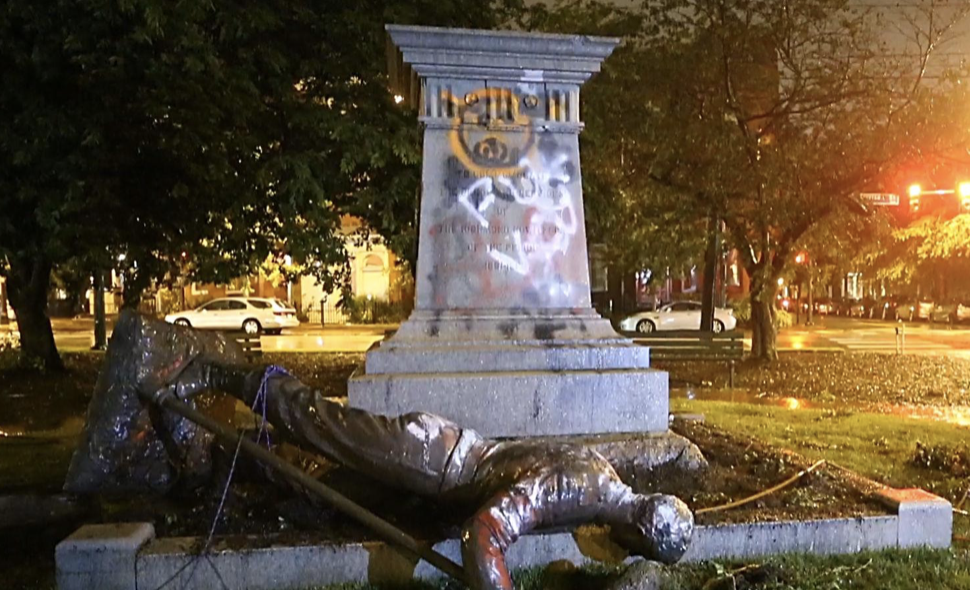
-
Mona Lisa five different occasions (1956 – 2022)
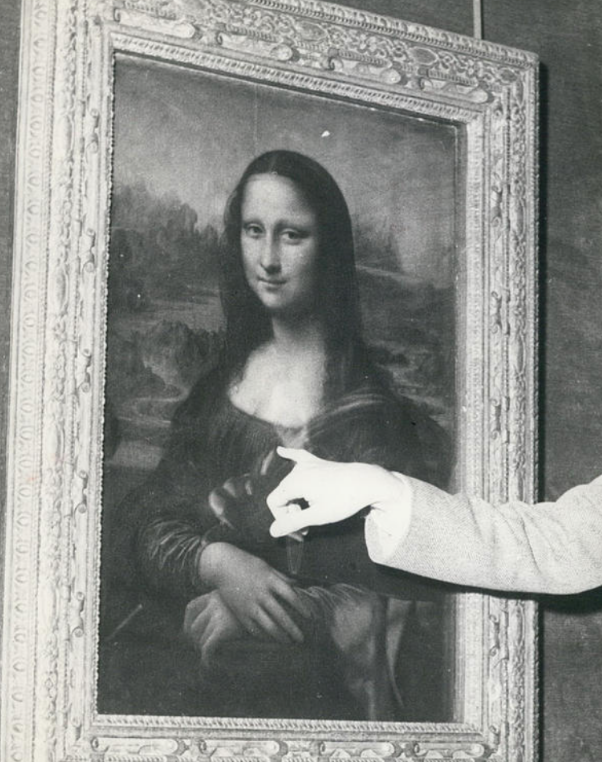
In 1995, a man attacked Leonardo da Vinci’s iconic portrait, the “Mona Lisa,” at the Louvre Museum in Paris. He threw acid at the painting, damaging it before security intervened. The attacker later claimed that his act was a protest against the museum’s policies. In December of 1956 it was smashed with a rock, chipping some of the paint off her elbow. Sadly, the man responsible did the damage due to allegedly wanting to go to prison for somewhere to sleep. In April 1974 it was attempted spray painted by a woman in a wheelchair protesting the accessibility of the museum. In 2009 a Russian woman threw a ceramic mug at the Mona Lisa which bounced off the glass. Allegedly she was frustrated about not being granted French nationality.
Finally, in May 2022 a man disguised as an old woman tried to damage the painting with cake. He smeared cake across the glass after failing to break it. He was escorted out screaming: “There are people who are destroying the Earth, think about it. All the artists tell you think about the Earth, all artists think about the Earth, that’s why I did this. Think about the planet.”
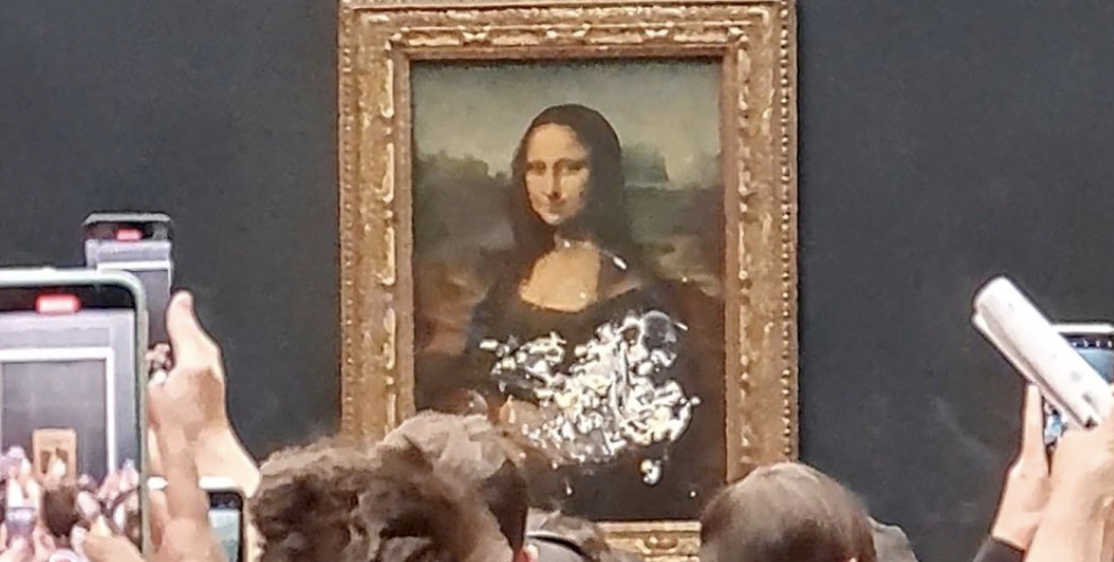
-
Just Stop Oil protestors destroying art with soup, oil and paint (2022)
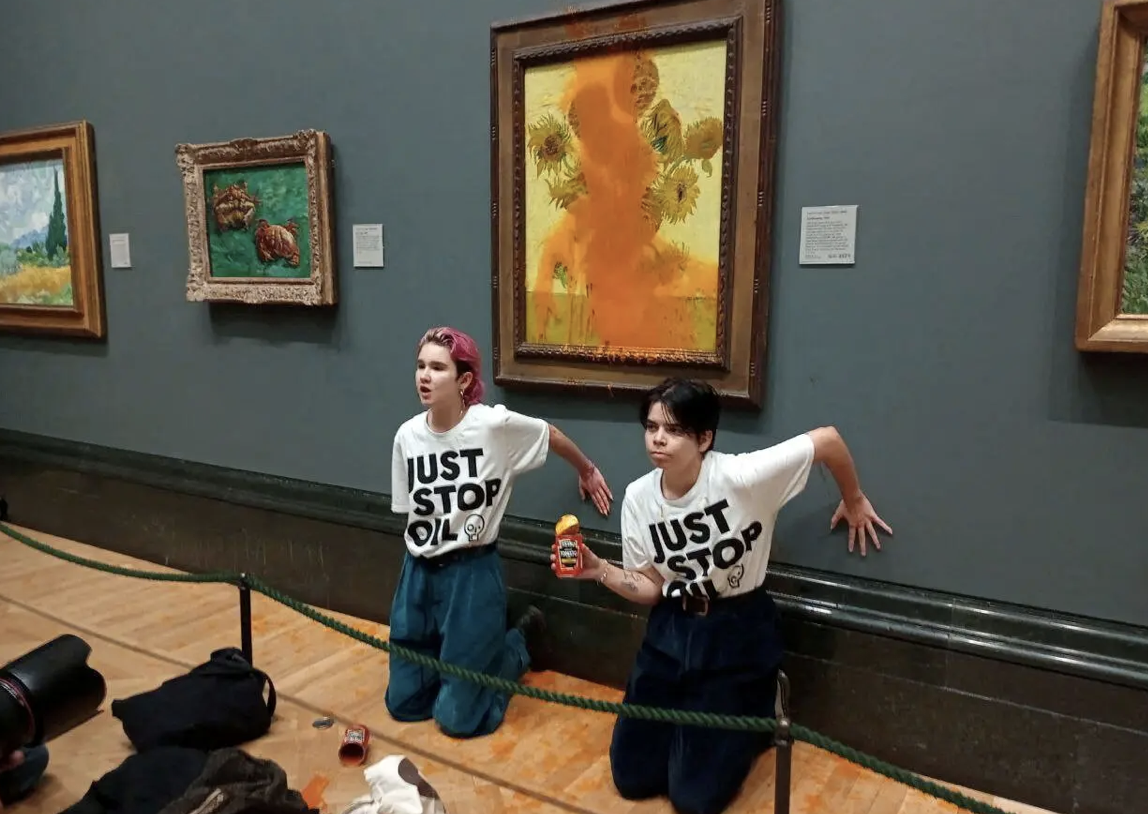
Members of Just Stop Oil have been responsible for a handful of art vandalism across 2022. In October, two members tossed tomato soup onto Vincent van Gogh’s iconic “Sunflowers” painting on display at the National Gallery in London. Later in the month another member glued his hand to Vermeer’s Girl With a Pearl Earring, and the other poured tomato soup over him.
For some, it was an inspired shock tactic aimed at raising awareness, while others viewed it as an act of vandalism, dismissing the connection between climate change and a masterpiece of art. One of the activists explained their methods with a simple quote: “We are in a climate catastrophe, and all you are afraid of is tomato soup or mashed potatoes on a painting.”
Just Stop Oil continued to send shockwaves across the globe with new and inventive ways to spread their message through their forced addition to infamous artworks.
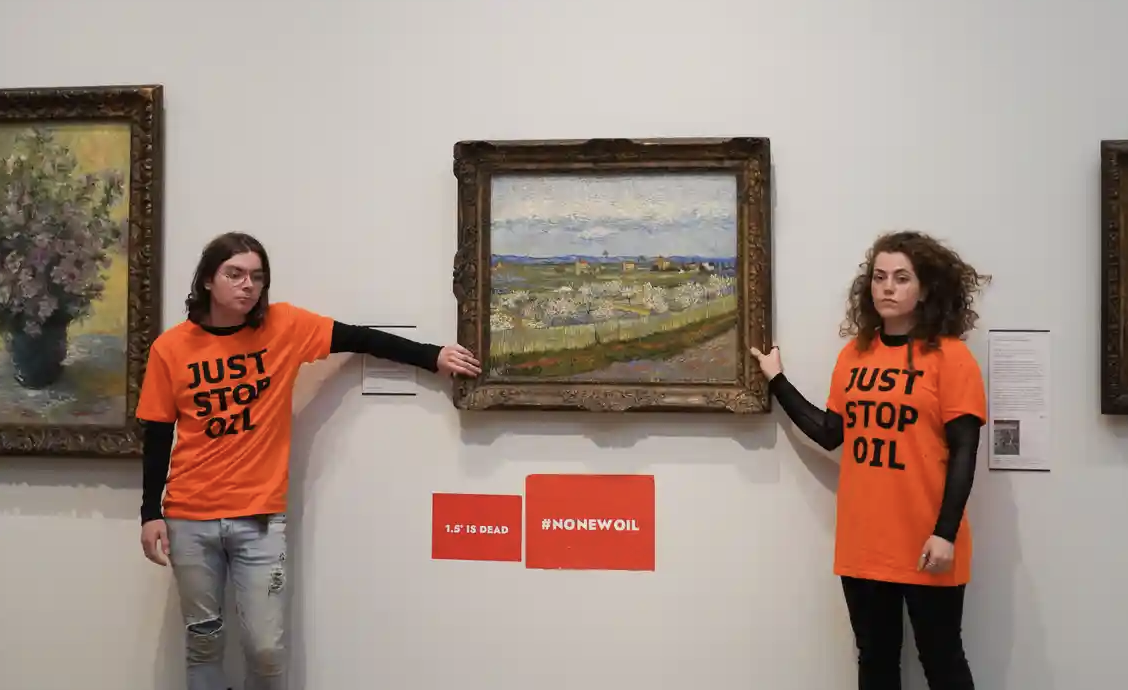
Why Protesters Destroy Art
Understanding why protesters destroy art requires an examination of the motivations and ideologies that drive such actions.
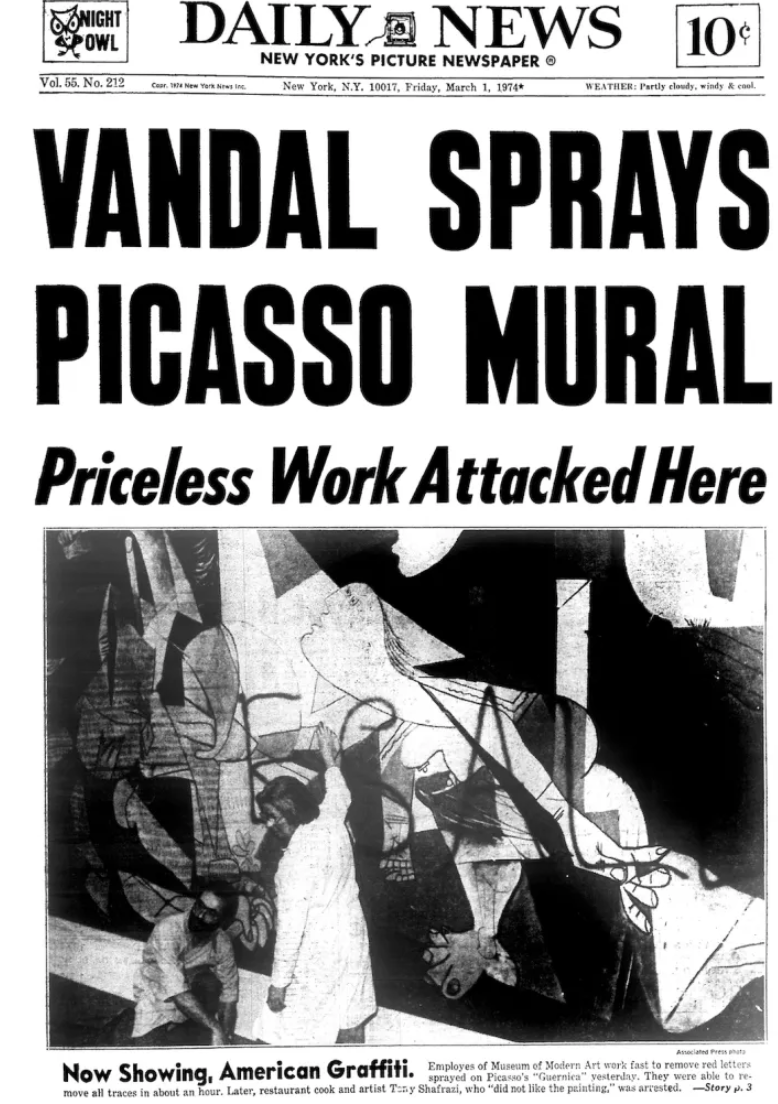
Understanding why protesters destroy art involves examining the motivations and ideologies that drive such actions. For many protesters, the act of destroying art serves as a symbolic gesture aimed at challenging oppressive systems or institutions. Confederate statues, for instance, symbolise a history of racism and slavery, and by tearing them down, protesters send a clear message that they will not tolerate the glorification of such a past.
In addition to expressing their anger, protesters destroy art to draw attention to injustice. Targeting prominent works of art or cultural landmarks ensures that their actions gain widespread media attention. This exposure helps protesters shed light on the issues they are protesting, sparking discussions and putting pressure on authorities to address these concerns.
Art destruction can be interpreted as a direct challenge to authority and the status quo, serving as a bold statement that the current system is unjust and in need of change. In this way, the act of destroying art becomes a radical form of dissent, challenging the norms and structures that protesters believe perpetuate injustice.
The destruction of art as a form of protest raises complex ethical and moral questions. While it can be a powerful means of challenging oppressive systems and amplifying voices that have long been marginalised, it also carries significant consequences, including the potential loss of cultural heritage and the escalation of conflicts.
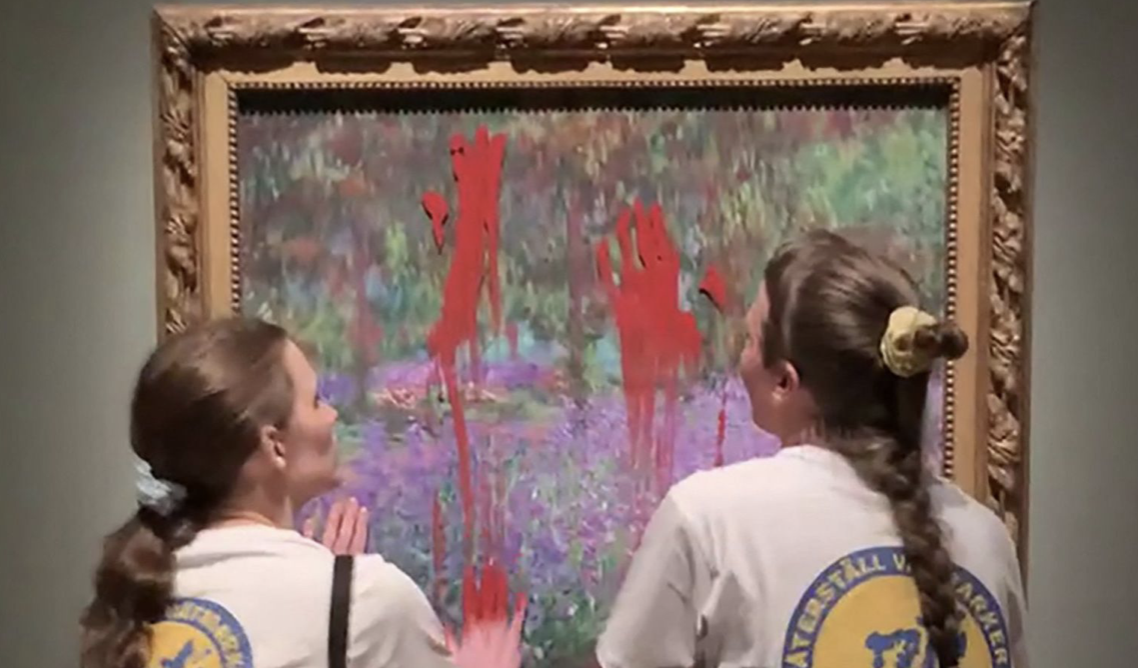
Check out top-rated local artists near you!
Are you an artist ? Sign Up












